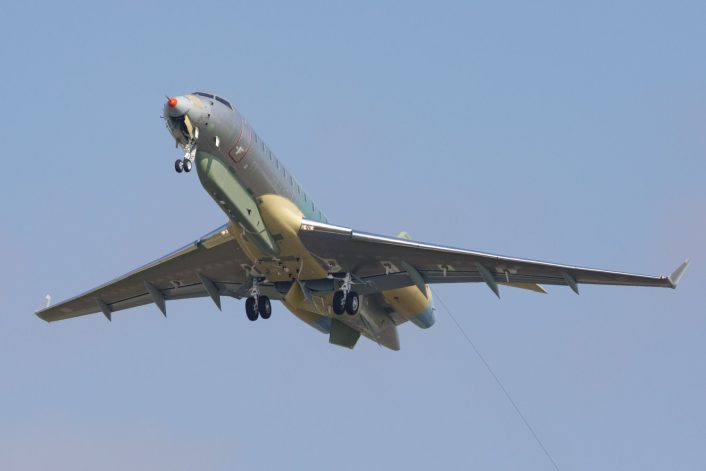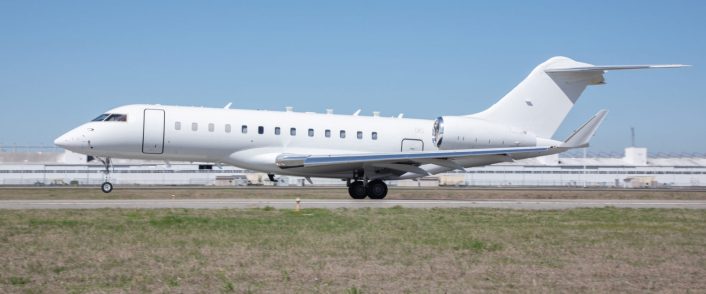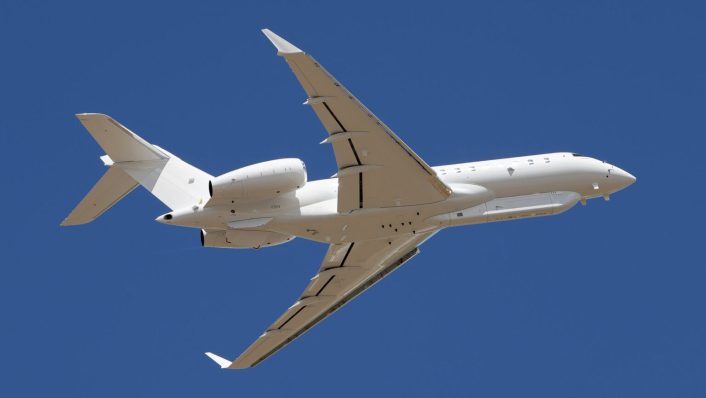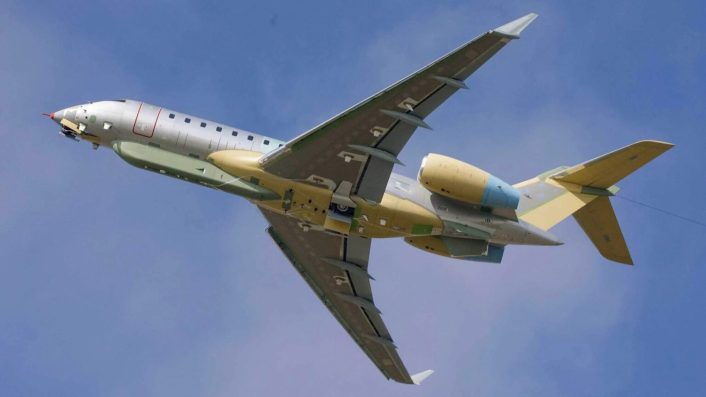The ATHENA-R will be part of a key four-month operational assessment to assess the readiness of the aircraft and possible fixes, as well as supporting the United States’ long-standing commitment to South Korea.
The U.S. Army deployed its newest intelligence, surveillance and reconnaissance (A-ISR) aircraft, the ATHENA-R (Army Theater Level High-Altitude Expeditionary Next Aerial-Radar) last week. The deployment is part of a key operational assessment, expected to last about four months, which will allow to address eventual fixes required to ensure the aircraft is ready for operations.
While the assessment is ongoing, the ATHENA-R will be also “supporting the long-standing commitment we have to the Republic of Korea,” said Andrew Evans, the director of the Army’s ISR Task Force, in a statement to Breaking Defense who first reported about the news. The new aircraft flew for the first time less than a year ago, in March 2024.
“We may spend the first few months doing some adjustments and tweaks. This is our newest system, and so as with any new system, we’ll have to work out some bugs, but … we have the right experts on the ground,” Evans said. “This will be an ongoing and iterative operational assessment with the goal of having those fixes complete in the coming months and then being in a sustainable place here by May or June, with it collecting on behalf of the US Army on a daily basis.”
Earlier today, the ATHENA jet did approach-and-landing training at Kunsan Air Base. The first ISR mission is expected later this week.
SCRUM06 // N291SR // #A2FAD1 pic.twitter.com/rkDQPj8bGA
— Bizjets of War (@bizjetsofwar) February 18, 2025
The Army is currently pursuing the Army Theater level High Altitude Expeditionary Next Airborne ISR Radar/Signals Intelligence (ATHENA-R/S) jet platforms as a bridging strategy to meet operational requirements until HADES is fielded. In 2023 the service selected L3Harris and MAG Aerospace for ATHENA-R and SNC for ATHENA-S.
ATHENA-R
The ATHENA program represents the U.S. Army’s push for enhanced ISR capabilities in multi-domain operations. With adversaries adopting more sophisticated electronic warfare and anti-access/area denial (A2/AD) strategies, traditional ISR platforms are becoming less effective. The program is part of the Army’s broader modernization strategy, including the forthcoming High Accuracy Detection and Exploitation System (HADES).

ATHENA aims to close these gaps by integrating advanced sensing technologies capable of providing real-time, actionable intelligence. The platform also provides a critical interim capability while HADES continues development, ensuring uninterrupted ISR coverage.
There are currently two main ATHENA programs, ATHENA-R and ATHENA-S, focused on Radar and Signals Intelligence, respectively. In 2023 the U.S. Army selected L3Harris and MAG Aerospace for ATHENA-R and SNC for ATHENA-S.
The ATHENA-R program is expected to provide greater endurance, more payload capacity, longer standoff ranges and leading-edge sensor technology in support of U.S. combatant commands. Operating at high altitude will provide the aircraft with greater survivability and line-of-sight, both essential to help the Army achieve its long-range precision fires modernization priorities.
According to the reports, the Global 6500 business jet used as a base for the ATHENA-R, in addition to the mission equipment and workstations, will be fitted with berthing quarters for crew rest, lavatories and a galley for long endurance missions. In fact, the aircraft is reported to have an endurance of about 14 hours and a range of about 6,000 nautical miles, while flying at an altitude in excess of 45,000 feet.
As mentioned earlier, L3Harris and MAG Aerospace were awarded the contract in August 2023 to provide two ATHENA-R aircraft to help the Army meet global intelligence requirements and close the gap between its medium and high-altitude ISR aircraft fleet. L3Harris announced the maiden flight of the first aircraft in March 2024, followed by the start of mission system testing announced by MAG Aerospace in July 2024.

The Global 6500
The Global 6500 is one of the components of the broader Bombardier Global Express family, a large cabin, long-range business jet family which first flew in 1996. The Global 6500 was unveiled in 2018 as a longer-range variant of the Global 6000, itself an improved variant of the original design.
The Global 6500 has upgraded Rolls-Royce BR710 Pearl engines, with up to 13% lower fuel burn for better operating costs and 9% more thrust. Also, the aircraft has better hot and high performance compared to the Global 6000 and 600 NM of additional range.
Before the U.S. Army selected the Global 6500 for HADES in December 2023, the Global Express family was already used for multiple military conversions. In fact, the Global 6000 is the base for the Saab GlobalEye Airborne Early Warning and Control (AEW&C) aircraft, the E-11 Battlefield Airborne Communication Node (BACN) and the Pegasus signal intelligence (SIGINT) aircraft, just to mention some.
The same aircraft was chosen also for the ongoing Army Theater Level High-Altitude Expeditionary Next Aerial-Radar/Signals Intelligence (ATHENA-R/S) programs, as well as HADES. The adoption of a commercial derivative aircraft not only offers the reliability and endurance of the Bombardier Global 6500 airframe, but also a higher supportability and deployability due to its global support network.
Implications for defense
The development of RAPCON-X reinforces the shift toward modular, scalable ISR solutions that support both strategic and tactical objectives. Its role in the ATHENA program also exemplifies the increasing importance of multi-domain integration for modern defense strategies.

With interoperability as a core feature, the platform ensures seamless collaboration with allied forces, enhancing coalition ISR capabilities. This is particularly crucial in contested regions where real-time intelligence sharing can influence outcomes.
The contractor-owned, contractor-operated (COCO) model adopted with ATHENA offers an efficient and cost-effective approach for militaries looking to acquire ISR capabilities without the logistical burden of ownership.
This goes hand-in-hand with the design which supports operations in peer-to-peer and near-peer environments without requiring extensive ground support, allowing higher deployment readiness. The platform’s interoperability and open architecture also align with emerging trends in defense procurement, emphasizing cost-effectiveness and rapid adaptability.
ARTEMIS, ARES and ATHENA paving the way for HADES
In preparation for HADES, the Army demonstrated and deployed operationally ISR jets as part of the contractor-owned and operated Airborne Reconnaissance and Targeting Multi-Mission System (ARTEMIS) and Aerial Reconnaissance and Electronic Warfare System (ARES) programs. These allowed to evaluate sensors and collect data at the altitudes, speed, and ranges that HADES is expected to perform in order to help inform the program’s requirements.
ARTEMIS has been operational since 2020, with deployments both in the Indo-Pacific and Europe. The Army valued the faster deployment capability of the platform, based on the Challenger 650, and the ability to travel anywhere in the world within 24 hours, in addition to the higher performance compared to a turboprop.
“No longer will the Army require multiple bed-down locations to access regional hotspots,” said last year Lt. Col. Matt Paladino, ISR Task Force aerial chief for the Army Military Intelligence Staff. “A single aircraft with the speed and range of HADES can provide thousands of miles of reach from a single bed-down site, forward deployed.”

In 2022 the service deployed the larger ARES, based on the Global 6500, to the Indo-Pacific. In addition to a performance increase, the Army said ARES is closer to the HADES project’s long-term goals.
“ARES revolutionized the Army’s contribution to a joint fight in that theater,” Paladino said. “ARES provides the [U.S. Army Pacific Command] an organic deep sensing capability with relevant collection capability for the modern battlefield. Adding additional altitude and persistence over ARTEMIS, ARES is competing nearly every day with the nation’s most advanced adversaries.”
Additionally, the Army is pursuing the Army Theater level High Altitude Expeditionary Next Airborne ISR Radar/Signals Intelligence (ATHENA-R/S) jet platforms as a bridging strategy to meet operational requirements until HADES is fielded. While addressing the gap until the fielding of the new platform, these allow to continue to evaluate sensors and collect data at the altitudes, speed, and ranges that HADES is expected to perform in order to help inform the program’s requirements.
In fact, the ATHENA aircraft will serve as a prototyping effort ahead of fielding of the Army’s new high-altitude ISR fleet. The aircraft are also considered part of a “campaign of learning” by the Army’s aviation and intelligence branches to familiarize themselves with high-altitude sensing operations.
In August 2024, U.S. Army has awarded Sierra Nevada Corporation the contract as lead system integrator for the HADES program. SNC will incorporate deep sensing technologies on the Bombardier Global 6500 business jet as part of the transformation into an ISR platform.
The Army awarded in December 2023 a contract to Bombardier for the first Global 6500 which will become the prototype of HADES, with options for two more. The plan is to field a fleet of 14 aircraft which should replace the entire manned ISR aircraft fleet.









